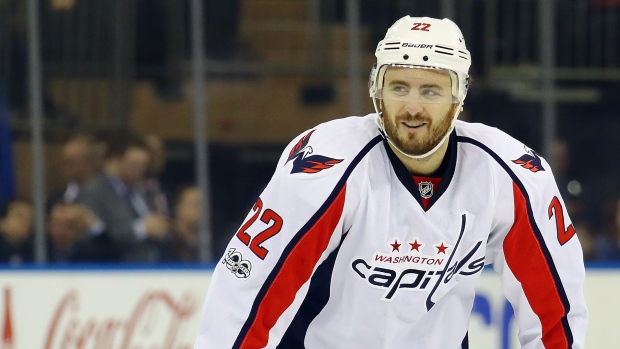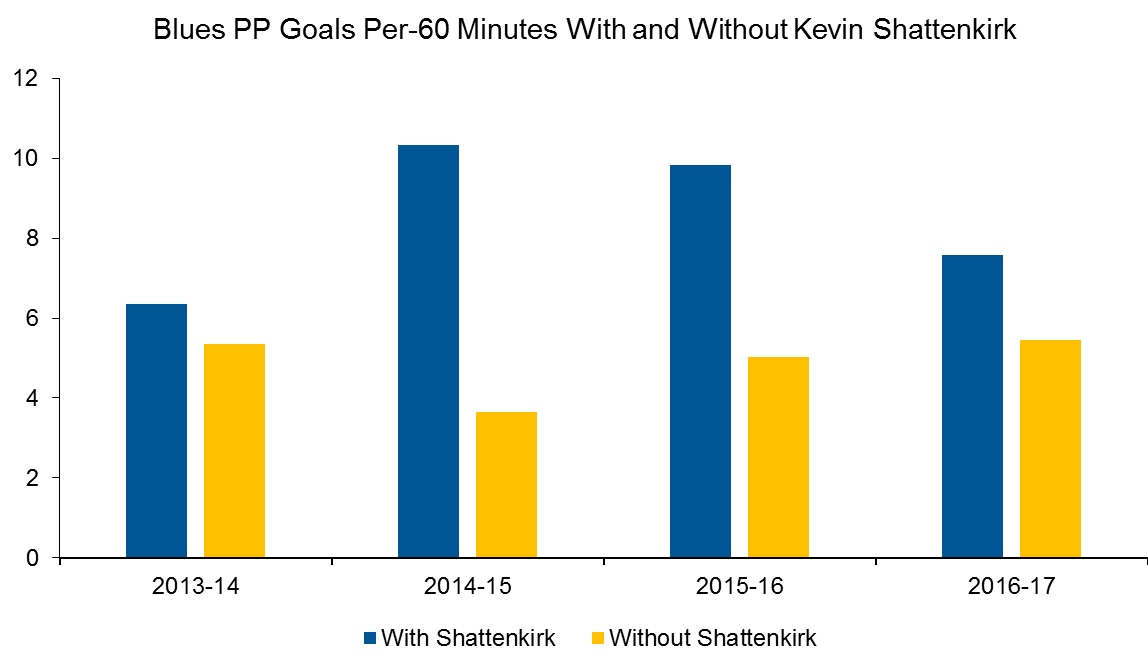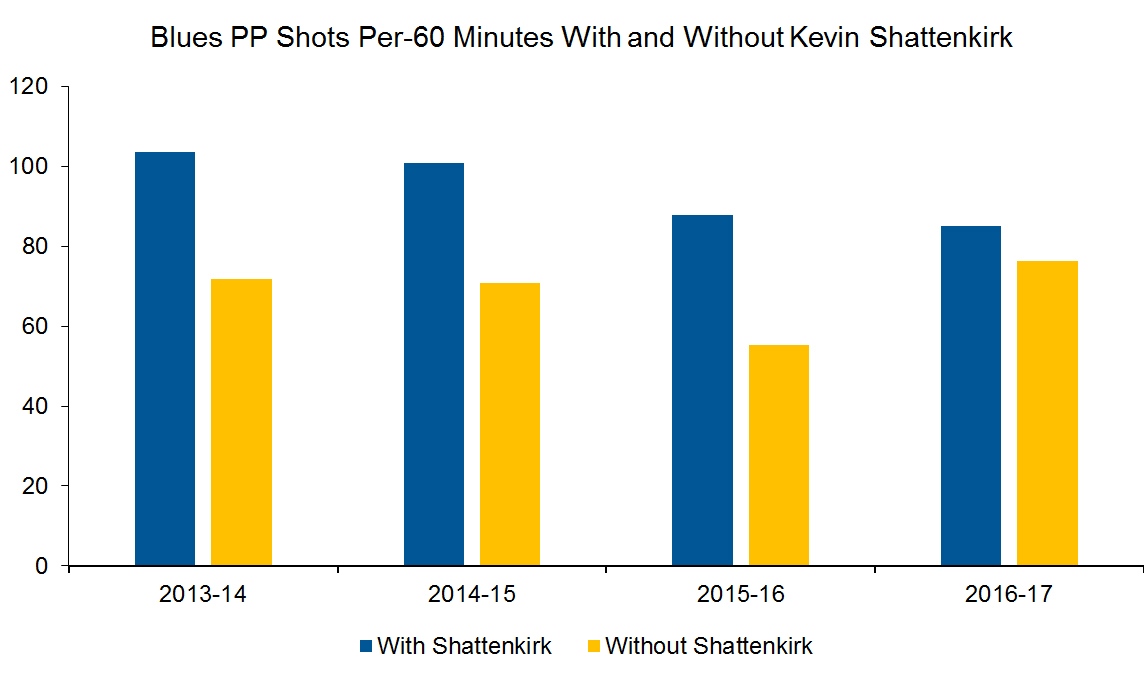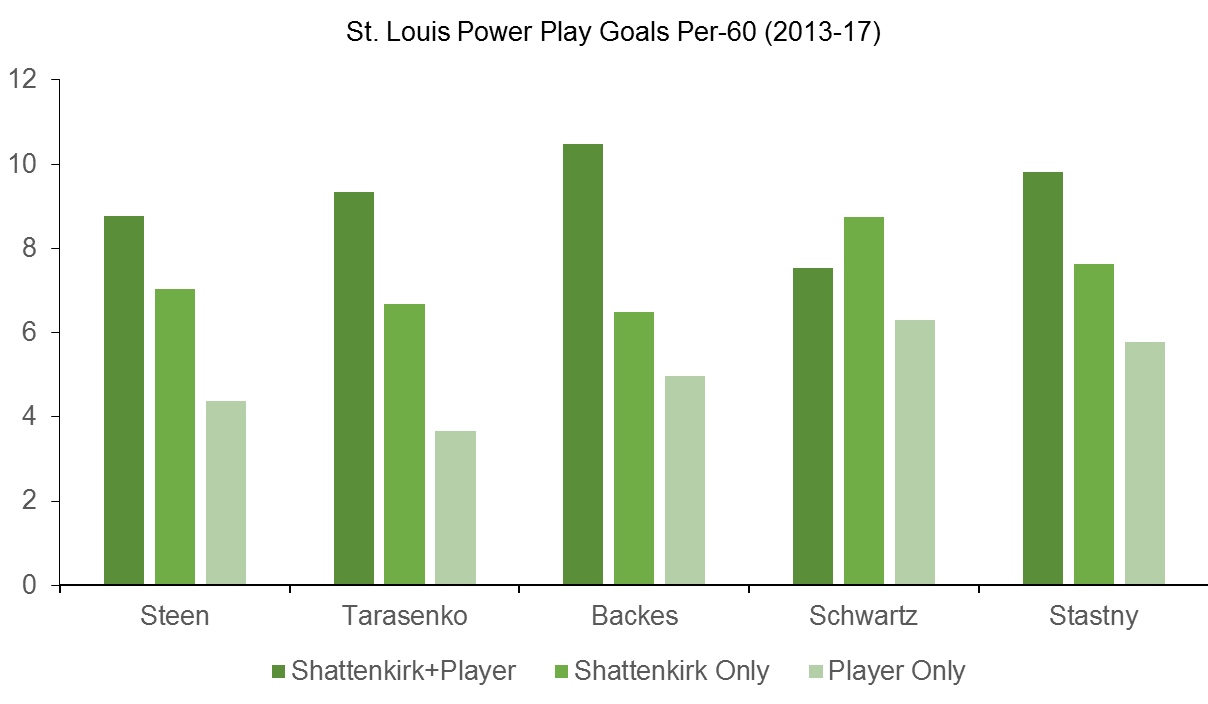Mar 2, 2017
How Shattenkirk can make a good power play great
The Washington Capitals have added a blueliner who is an absolute monster with the man advantage, Travis Yost writes.
By Travis Yost

For years, the Washington Capitals have touted one of the league’s better power-play units. With the acquisition of puck-moving defenceman Kevin Shattenkirk, it somehow just improved.
It was a bit of a surprise when Shattenkirk was shipped to Washington – if not for the fact that the price didn’t seem steep (St. Louis received a first-round pick, a conditional second-round pick, minor-league forward Brad Malone and prospect Zach Sanford), then for the fact that the already dominant Capitals felt it necessary to upgrade their team at the trade deadline.
The Capitals have been more or less steamrolling teams this year, sporting a +73 goal differential that is comfortably tops in the NHL. Their success comes from the combination of a very talented forward group, an improved defensive corps and a perennial Vezina Trophy candidate in Braden Holtby. This is a team that, regardless of whether or not they added Shattenkirk, should have as good a chance as ever at winning a Stanley Cup.
One of the biggest values Shattenkirk brings to a team, as mentioned above, is his ability on the man advantage. In the Nicklas Backstrom/Alex Ovechkin era, this has been Washington’s biggest strength – their 8.6 goals per-60 minutes at 5-on-4 has far and away been the league’s best. Interestingly, that number has slipped this season. At 7.4 goals per-60 minutes, their production is still quality, but a considerable downgrade from where things have been.
Enter Shattenkirk. In the last four years with St. Louis, Shattenkirk was an absolute monster on the power play, and the Blues benefited. Their power play with him on the ice has been fantastic every year, and without him, it has been considerably less productive.
You can show this two ways. One, through the goal rates. Two, through the shot volumes that drive the goal rates. First, the goals (data via Corsica):

Every year, St. Louis was better with him on the ice from a goals perspective – on a four-year average, his presence on the ice has been worth about four incremental goals per 60 minutes. The same divide holds true on the shot-generation front:

Again, every year St. Louis’ numbers were considerably higher with him on the ice than with him off of the ice. Shattenkirk and his power-play unit generate about 25 more shots per 60 minutes than the other Blues unit – a massive number and a big reason why there’s such a stark goal divide between the groups.
Is this evidence that Shattenkirk alone moved the needle in St. Louis? Not necessarily. After all, if Shattenkirk’s consistently been a top-unit defender, than he’s consistently played with types like Vladimir Tarasenko, who are goal-scoring machines and wondrously effective on the power play. Is it possible that the forward groups have insulated Shattenkirk’s numbers?
I’m not entirely sure that’s the case. There are five forwards Shattenkirk played consistently with on the power play over the last four years – the aforementioned Tarasenko, as well as Alex Steen, David Backes, Jaden Schwartz, and Paul Stastny.
What we can do to get an idea for who is helping who here is measure the results of all players when playing with Shattenkirk, then measure each of the players when they are separated from one another. If Shattenkirk’s truly driving some of the goal-scoring rates in St. Louis, then we would expect Shattenkirk to be fantastic in all circumstances and environments, regardless of who he is playing with.
Is that true?

In one word: yes. To me, this is one of the most fascinating wrinkles of what has happened in St. Louis. Despite the prevailing theory that their talented forwards have predominantly driven their power-play success, I’m not entirely sure that’s the case. Every single core Blues forward saw his numbers dive when playing with any defender not named Kevin Shattenkirk, but Shattenkirk’s numbers were emphatically positive regardless of who he was playing with.
There might be something to the theory that the Blues’ second pairing was not well-suited for the power-play, which means that the Blues really only had success when Shattenkirk and his partner were out there. That, to some degree anyway, would insulate the numbers of their first-pairing (they would always be playing with quality forwards) relative to their first line (they may or may not be playing with quality defenders).
Either way, that’s a pretty considerable divide in performance. I think that’s one of the big reasons the Capitals decided to pay the price and acquire Shattenkirk. If there’s one flaw with this team, it’s that their power play – while still productive – hasn’t been nearly as good as it was in the past.
If any guy can fix it, it’s probably this quarterback.

